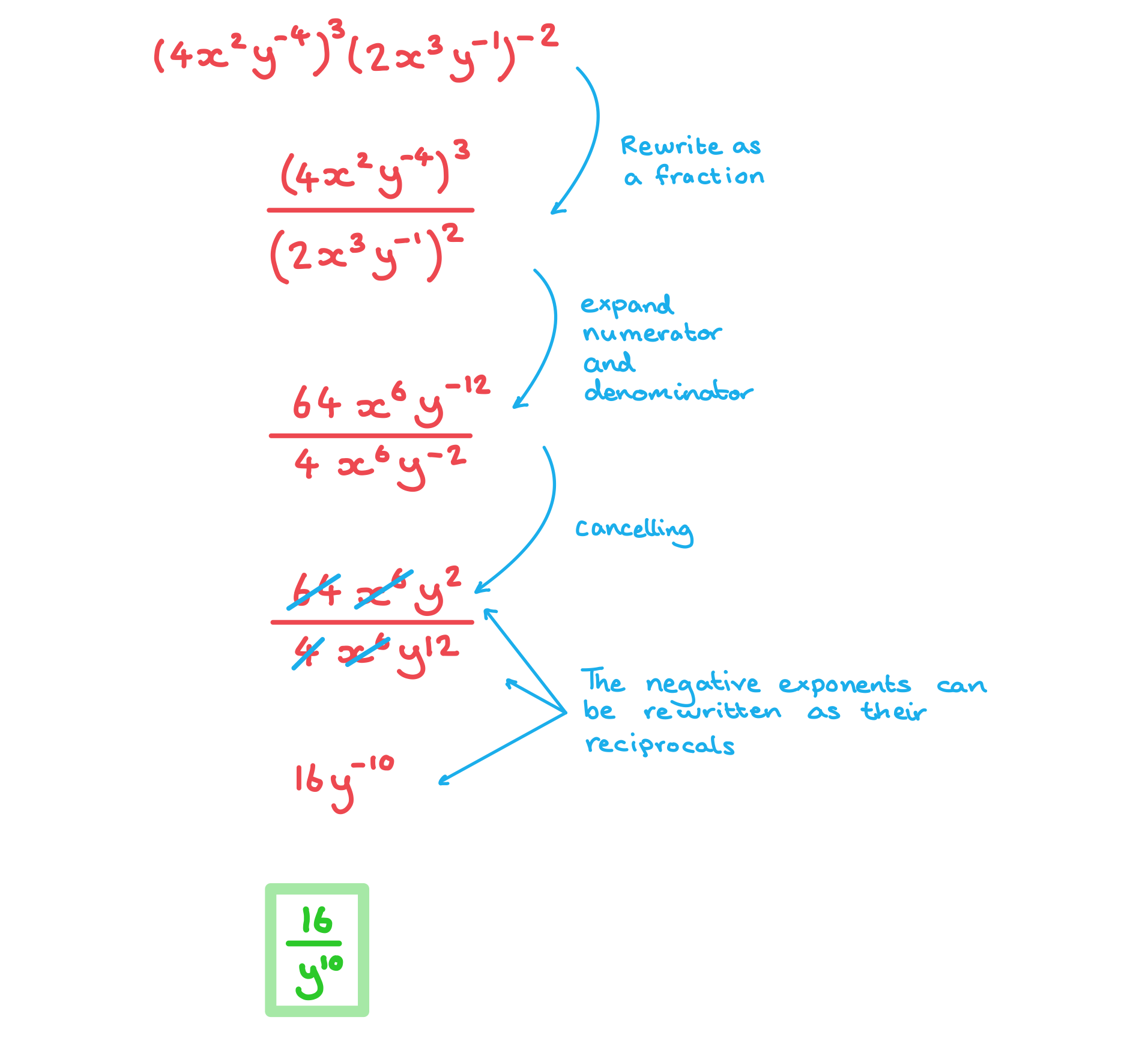1.1.2 Exponents & Logarithms
Laws of Indices
What are the laws of indices?
- Laws of indices (or index laws) allow you to simplify and manipulate expressions involving exponents
- An exponent is a power that a number (called the base) is raised to
- Laws of indices can be used when the numbers are written with the same base
- The index laws you need to know are:
- These laws are not in the formula booklet so you must remember them
How are laws of indices used?
- You will need to be able to carry out multiple calculations with the laws of indices
- Take your time and apply each law individually
- Work with numbers first and then with algebra
- Index laws only work with terms that have the same base, make sure you change the base of the term before using any of the index laws
- Changing the base means rewriting the number as an exponent with the base you need
- For example,
- Using the above can them help with problems like
Exam Tip
- Index laws are rarely a question on their own in the exam but are often needed to help you solve other problems, especially when working with logarithms or polynomials
- Look out for times when the laws of indices can be applied to help you solve a problem algebraically
Worked example
Simplify the following equations:
i)

ii)

Introduction to Logarithms
What are logarithms?
- A logarithm is the inverse of an exponent
- If
then
where a > 0, b > 0, a ≠ 1
- This is in the formula booklet
- The number a is called the base of the logarithm
- Your GDC will be able to use this function to solve equations involving exponents
- If
- Try to get used to ‘reading’ logarithm statements to yourself
would be read as “the power that you raise
to, to get
, is
”
- So
would be read as “the power that you raise 5 to, to get 125, is 3”
- Two important cases are:
- Where e is the mathematical constant 2.718…
- This is called the natural logarithm and will have its own button on your GDC
- Logarithms of base 10 are used often and so abbreviated to log x
Why use logarithms?
- Logarithms allow us to solve equations where the exponent is the unknown value
- We can solve some of these by inspection
- For example, for the equation 2x = 8 we know that x must be 3
- Logarithms allow use to solve more complicated problems
- For example, the equation 2x = 10 does not have a clear answer
- Instead, we can use our GDCs to find the value of
- We can solve some of these by inspection
Exam Tip
- Before going into the exam, make sure you are completely familiar with your GDC and know how to use its logarithm functions
Worked example
Solve the following equations:
i)

ii)


You've read 0 of your 0 free revision notes
Get unlimited access
to absolutely everything:
- Downloadable PDFs
- Unlimited Revision Notes
- Topic Questions
- Past Papers
- Model Answers
- Videos (Maths and Science)
Did this page help you?
